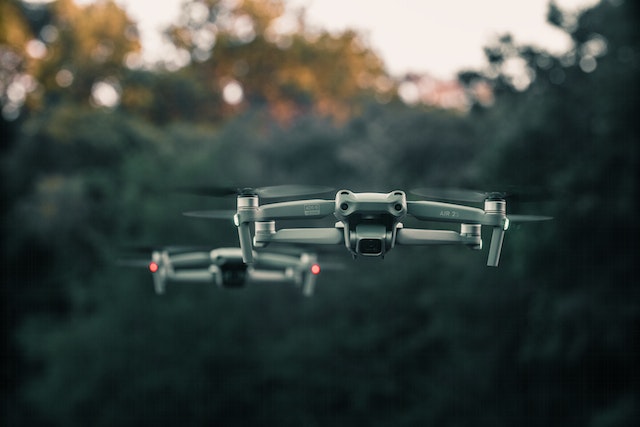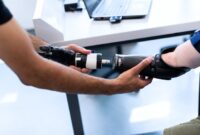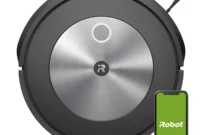Drones have become increasingly popular in recent years, with their applications ranging from aerial photography to surveying and even delivery services. While basic drone flying skills are essential for every pilot, mastering advanced drone maneuvers can take your drone piloting skills to new heights. In this article, we will explore various advanced drone maneuvers, discuss how to master them, and delve into their applications in different industries.

I. Introduction
Definition of advanced drone maneuvering
Advanced drone maneuvering refers to the skillful execution of complex flight maneuvers using a drone. These maneuvers go beyond basic flight controls and allow pilots to perform intricate and precise actions with their drones, enabling them to capture unique and breathtaking footage or accomplish specific tasks.
Importance of advanced drone maneuvering skills
Having advanced drone maneuvering skills opens up a world of possibilities for drone pilots. It allows them to push the boundaries of creativity, capture stunning visuals from unique angles, and perform complex tasks that would be otherwise impossible. Whether you’re a professional photographer, filmmaker, or a hobbyist looking to explore new possibilities, mastering advanced drone maneuvers can greatly enhance your aerial capabilities.
II. Types of Advanced Drone Maneuvers
To truly master advanced drone maneuvering, it’s important to be familiar with various types of maneuvers available. Let’s explore some of the most popular advanced drone maneuvers:
A. 360-Degree Panorama Shots
One of the most visually impressive maneuvers is capturing a 360-degree panoramic shot. This involves rotating the drone horizontally while capturing images or videos, resulting in a seamless panoramic view. This maneuver is particularly useful for landscape photography or showcasing large areas.
B. Orbit and Circle Mode
Orbit or circle mode allows the drone to automatically fly in a circular path around a subject while keeping it centered in the frame. This is ideal for capturing dynamic shots of moving objects or creating captivating footage with a cinematic feel.
C. Follow Me Mode
Follow Me mode enables the drone to autonomously track and follow a designated subject, whether it’s a person, vehicle, or any moving object. This maneuver is useful for capturing action shots or creating engaging footage where the drone acts as a personal cameraperson.
D. Waypoint Navigation
Waypoint navigation allows the drone to fly along pre-determined paths by setting specific GPS coordinates. This is particularly beneficial for mapping, surveying, or creating precise flight routes for autonomous missions.
E. Terrain Following
Terrain following is a maneuver that enables the drone to maintain a consistent altitude relative to the ground’s topography. This is particularly useful when flying over uneven or hilly terrains, ensuring a smooth and stable flight.
F. Active Tracking
Active tracking allows the drone to track and follow a moving subject actively. It utilizes advanced algorithms and sensors to keep the subject in focus and centered in the frame, making it ideal for sports events or fast-paced action sequences.
G. Advanced Gimbal Movements
Gimbals are devices that stabilize the camera on the drone, allowing for smooth and stable footage. Advanced gimbal movements involve using the gimbal’s capabilities to execute complex camera movements such as tilting, panning, or rolling, adding cinematic effects to your shots.
These are just a few examples of advanced drone maneuvers. The possibilities are vast, and the only limit is your creativity and piloting skills.
III. Mastering Advanced Drone Maneuvering
Mastering advanced drone maneuvering requires dedication, practice, and a systematic approach. Here are some steps to help you improve your skills:
A. Understanding the drone’s flight modes
Before attempting advanced maneuvers, familiarize yourself with your drone’s flight modes. Read the user manual and understand the capabilities and limitations of each mode. This knowledge will provide a solid foundation for exploring more complex maneuvers.
B. Practicing basic flight maneuvers
Start by honing your basic flight skills such as takeoff, landing, hovering, and basic navigational movements. Focus on maintaining stability and control over the drone in various flight situations.
C. Gradually progressing to advanced maneuvers
Once you feel confident with basic maneuvers, gradually introduce more advanced maneuvers into your practice sessions. Start with simpler maneuvers and gradually increase the complexity as you gain experience and confidence.
D. Utilizing simulator software for training
Drone simulators are valuable tools for practicing advanced maneuvers in a safe and controlled environment. They allow you to simulate different flight scenarios and improve your piloting skills without the risk of damaging your drone.
E. Joining drone flying communities and events
Engaging with other drone enthusiasts can provide valuable insights, tips, and guidance. Join local drone flying communities, attend events, and participate in drone races or competitions to learn from experienced pilots and stay updated with the latest trends and techniques.
F. Taking professional drone piloting courses
If you’re serious about mastering advanced drone maneuvering, consider enrolling in professional drone piloting courses. These courses provide structured training programs, hands-on practice, and expert guidance to help you become a proficient drone pilot.
IV. Safety Considerations
While exploring advanced drone maneuvering, it’s crucial to prioritize safety. Here are some essential safety considerations:
A. Conducting pre-flight inspections
Before each flight, perform a thorough inspection of your drone. Check for any damages, loose connections, or malfunctions. Ensure the propellers are secure and in good condition. Also, verify that the batteries are adequately charged.
B. Understanding flight regulations and restrictions
Familiarize yourself with the local flight regulations and restrictions in your area. Adhere to the guidelines regarding drone flying altitudes, no-fly zones, and privacy laws. Always fly in designated areas and respect the privacy of others.
C. Ensuring proper maintenance and battery management
Regularly maintain your drone by cleaning it and following the manufacturer’s recommendations for servicing and upkeep. Properly manage your drone’s batteries, including storage, charging, and replacement, to ensure optimal performance and longevity.
D. Monitoring weather conditions
Before flying, check the weather conditions and forecasts. Avoid flying in strong winds, rain, or extreme weather conditions that could jeopardize the safety of your drone or affect its flight performance.
E. Maintaining visual line of sight
Maintain visual line of sight with your drone at all times, especially when performing advanced maneuvers. Keep an eye on your surroundings, avoid obstacles, and be prepared to react to unforeseen circumstances.
V. Applications of Advanced Drone Maneuvering
The ability to perform advanced drone maneuvers opens up numerous applications across various industries. Some notable applications include:
A. Aerial photography and videography
Advanced drone maneuvers allow photographers and videographers to capture stunning aerial imagery and videos. Whether it’s for landscape photography, real estate marketing, or event coverage, drones offer a unique perspective that was once only possible with expensive equipment or helicopters.
B. Film and cinematography industry
Drones have revolutionized the film and cinematography industry by providing filmmakers with an affordable and versatile tool for capturing breathtaking shots. Advanced drone maneuvers can add a cinematic touch to films, documentaries, and commercials, creating immersive and visually stunning experiences.
C. Construction and architecture
In the construction and architecture sectors, drones equipped with advanced maneuvering capabilities can be used for site surveys, monitoring progress, and capturing aerial images for project documentation. The ability to navigate tight spaces or fly at various elevations provides valuable insights for project planning and execution.
D. Agriculture and farming
Drones equipped with advanced maneuvering capabilities can assist in precision agriculture. They can be used for crop monitoring, aerial spraying, and mapping. Advanced maneuvers allow for detailed inspections of crops, identification of pests or diseases, and optimization of irrigation and fertilization practices.
E. Search and rescue operations
In search and rescue operations, drones with advanced maneuvering abilities can access hard-to-reach areas, provide real-time aerial footage, and assist in locating missing persons or assessing emergency situations. Advanced maneuvers help navigate challenging environments and provide critical information to aid in rescue efforts.
F. Surveying and mapping
Drones are increasingly used for land surveying and mapping due to their ability to quickly capture high-resolution aerial images. Advanced drone maneuvers enable precise mapping of large areas, creation of 3D models, and identification of topographic features for various applications such as urban planning, environmental monitoring, and infrastructure development.
G. Sports and outdoor events coverage
Drones are becoming a popular tool for capturing sports events and outdoor activities from unique angles. Advanced maneuvers allow for dynamic and engaging footage, enhancing the viewer’s experience and providing new perspectives on the action.
VI. Future Developments in Advanced Drone Maneuvering
As drone technology continues to evolve, we can expect exciting advancements in advanced drone maneuvering. Some areas of future development include:
A. Autonomous flight capabilities
Advancements in artificial intelligence and automation are paving the way for autonomous flight capabilities in drones. This means drones will be able to perform complex maneuvers and tasks independently, opening up new possibilities for applications and reducing the skill level required for certain maneuvers.
B. Collision avoidance systems
Safety is paramount in the drone industry, and collision avoidance systems are being developed to minimize the risk of mid-air collisions. These systems utilize sensors, cameras, and advanced algorithms to detect and avoid obstacles, enhancing the safety and reliability of advanced drone maneuvers.
C. Improved stabilization and image tracking
Further advancements in gimbal technology and stabilization systems will improve the stability and smoothness of footage captured during advanced maneuvers. Enhanced image tracking capabilities will allow drones to track subjects more accurately and maintain a stable frame, resulting in high-quality and professional-looking footage.
D. Advanced obstacle detection and mapping
Developments in obstacle detection and mapping technologies will enable drones to navigate complex environments with greater precision. Advanced sensors and mapping algorithms will allow drones to detect and avoid obstacles in real-time, making advanced maneuvers in crowded or obstructed spaces safer and more efficient.
E. Integration with artificial intelligence and machine learning
Integration of drones with artificial intelligence and machine learning algorithms will enable advanced capabilities such as intelligent flight planning, automated object recognition, and adaptive flight control. Drones will be able to learn from their environment, adapt to changing conditions, and optimize their flight paths and maneuvers accordingly.
VII. Conclusion
Mastering advanced drone maneuvering opens up a world of creative possibilities and practical applications. By practicing and gradually progressing through various maneuvers, you can elevate your drone piloting skills and capture breathtaking footage or accomplish complex tasks. However, it’s important to prioritize safety, adhere to regulations, and continuously update your knowledge and skills as drone technology evolves. So, take your drone piloting to new heights and unlock the full potential of advanced drone maneuvering.
VIII. FAQs
1. How long does it take to master advanced drone maneuvering?
The time required to master advanced drone maneuvering varies depending on individual learning abilities, practice frequency, and dedication. It can take several weeks to months of consistent practice and learning to become proficient in executing complex maneuvers.
2. Are there any age restrictions for flying drones?
Age restrictions for flying drones vary by country and jurisdiction. In many countries, there are age restrictions in place, typically requiring individuals to be at least 16 or 18 years old to operate a drone. It’s important to check the specific regulations in your area before flying a drone.
3. Do I need a license to perform advanced drone maneuvers?
The requirement for a license to perform advanced drone maneuvers depends on the purpose and context of your drone operations. For recreational use, a license may not be required. However, if you plan to use drones for commercial purposes or in certain regulated industries, such as filmmaking or surveying, you may need to obtain a license or certification from the appropriate authorities.
4. Can I fly a drone at night?
Flying drones at night is subject to regulations and restrictions in many countries. In some cases, it may require special permission or additional lighting and equipment to ensure safe operations. Familiarize yourself with the local regulations regarding nighttime drone flying before attempting it.
5. What are some recommended drones for advanced maneuvers?
There are several drones available in the market that offer advanced maneuvering capabilities. Some popular options include the DJI Phantom series, DJI Mavic series, Autel Robotics Evo, and Yuneec Typhoon H Pro. Consider factors such as flight performance, camera quality, and ease of use when selecting a drone for advanced maneuvers.


